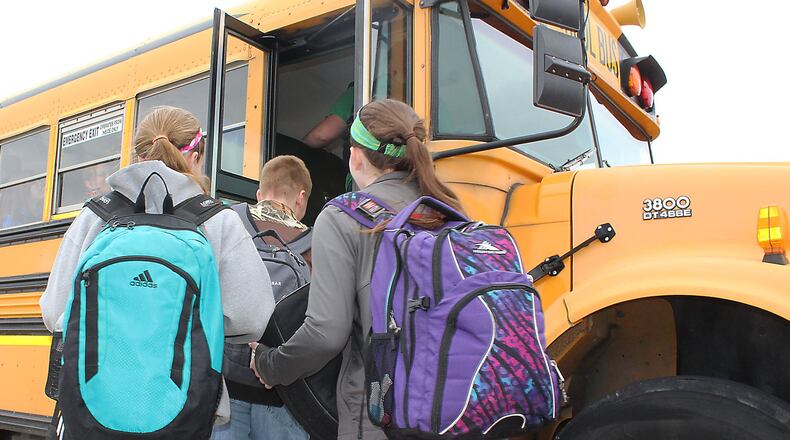Ohio ranked 22nd out of 50 states in Education Week’s rankings, which measure K-12 achievement, school finance systems and the group’s own “Chance for Success” measure, which tracks 13 “cradle-to-career” indicators.
Ohio’s score dropped half a point from last year, but its ranking of 22nd is one spot better, and puts it roughly in the middle of this region. Pennsylvania, Wisconsin and Illinois cracked the top 15; Indiana was one spot ahead of Ohio at 74.7, and Kentucky, Michigan and West Virginia were behind Ohio with scores of 72 and 71.
Ohio Department of Education officials looked at the rankings in terms of competition.
"Ohio's students compete in a global economy," said ODE spokeswoman Brittany Halpin. "Education Week's report highlights the need to keep raising expectations for our students and focus our attention on supporting schools and vulnerable populations of students."
Halpin said ODE will "evaluate the ways we can drive improvement" as the state develops plans under new federal education law.
New England and mid-Atlantic states took the top six spots in Education Week’s rankings, with Massachusetts first at 86.5, followed by New Jersey, Vermont, New Hampshire, Maryland and Connecticut. Nevada was the lowest scorer at 65.0, just ahead of Mississippi and New Mexico.
On all three measures, Ohio ranked roughly average – 21st in school finance, 25th in K-12 achievement and 29th in chance for success.
The achievement piece measures some of the same things as Ohio's own state report card — reading and math performance, high school graduation rates, and Advanced Placement exam results, factoring in year-to-year change and closing poverty-based achievement gaps.
The finance category tracks school spending patterns, plus funding equity to different types of districts. And Chance for Success links everything from parent education levels and early-childhood foundations to college degree rates and workforce trends.
The sub-scores in those categories can be confusing. Under K-12 achievement, Ohio earned only a C-minus for its current performance, but that score ranked 16th among the 50 states, because few states met listed standards. Meanwhile Ohio’s effort to close poverty-based achievement gaps looks solid based on a B-minus grade, but the state ranks only 37th, as other states have done better.
Chad Aldis, Ohio vice president for the Fordham Institute, which sponsors charter schools in Dayton, urged caution with the data. He pointed out that some categories of the report card have changed from year to year, and that school funding outlooks can easily change depending on how they're calculated.
“That being said, Ohio still faces challenges in overcoming a significant poverty-based achievement gap and lower-than-average adult educational attainment,” Aldis said.
Education Week data showed Ohio below some national averages both in early childhood (preschool and kindergarten enrollment) and later-life measures (postsecondary enrollment and degree holders).
STATE-BY-STATE SCORES
Top five
Massachusetts: 86.5
New Jersey: 85.6
Vermont: 83.8
New Hampshire: 83.4
Maryland: 82.8
Regional states
Pennsylvania: 80.2
Illinois: 77.0
Indiana: 74.7
Ohio: 74.2
Kentucky: 72.6
Michigan: 71.4
West Virginia: 71.3
Bottom five
Oklahoma: 68.3
Idaho: 67.6
New Mexico: 66.3
Mississippi: 65.8
Nevada: 65.0
About the Author

